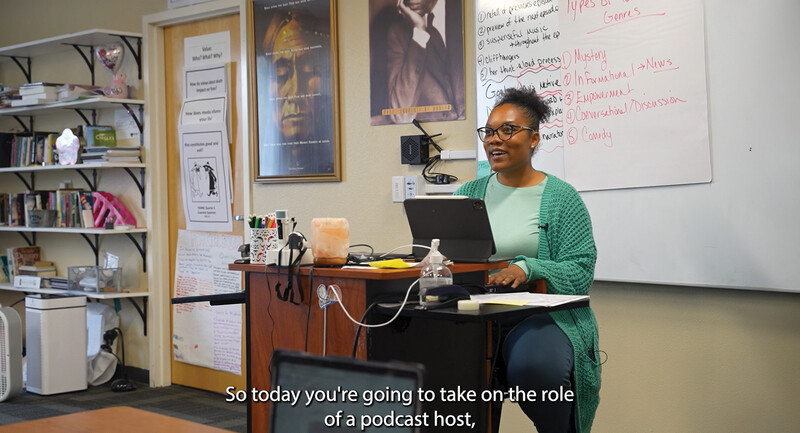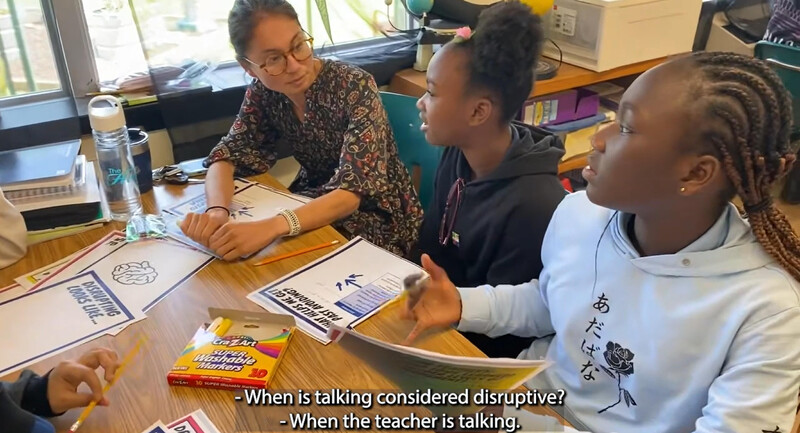In a recent article in the Washington Post, renowned educator and founder of the Center for Teaching and Learning Nancie Atwell explained that the two most powerful innovations in her 40 years of teaching were providing students with time and choice as readers and writers. When I read this, I was immediately transported to the summer after my first year of teaching 4th graders, when I had the career-altering opportunity to participate in the Spartanburg Writing Project’s Summer Institute and experience the power of time and choice for myself.
The Spartanburg Writing Project is an affiliate of the National Writing Project, and during those four weeks of June we spent large chunks of time every day reading, writing, and thinking about our own personal and professional passions and projects. We were a diverse group of teachers from all backgrounds and grade levels. We were purposefully put in a parallel experience of participating in an integrated reading/writing workshop model where we read, wrote, conferenced so we could later implement this model with our students. We individually and collectively grew. Even though we worked on reading and writing different topics, we all went through the same rigorous process of trying to gain meaning from a text and then make meaning on a page as our fingers furiously typed ideas we valued. Our learning was differentiated even before differentiation became a buzzword.
After that summer and for the last 14 years, I have continued to work with the Spartanburg Writing Project as a teacher consultant and a school partnership coordinator, providing teachers and students with tried and true differentiation strategies and structures. I’ve learned that the critical ingredients of time and choice in Atwell’s recipe for growing readers and writers works. Here are five strategies and structures that utilize time and choice to effectively differentiate instruction.
Workshop Model
The workshop model itself is a powerful tool for differentiation. While most of us know the workshop model in the form of a reading and writing workshop, the structure is applicable in any content area. The components of an effective writing workshop are a short, focused mini-lesson that is targeted to students’ needs, followed by a longer period of time for students to apply independently the strategies and skills modeled and discussed in the mini-lesson. During the independent work time, teachers provide scaffolding and support and engage in formative assessment through conferencing and kidwatching (see below) to help guide students and also to also guide their next instructional steps. The workshop ends with share time where the students have an opportunity to reflect on what they did, whether related to process or product.
Two of my favorite professional development resources for writing workshops are Katie Wood Ray’s texts Writing Workshop: Working Through the Hard Parts (and They’re All Hard Parts) (2001, NCTE) and Study Driven (2006, Heinemann). In the first, she provides a practitioner-based approach to understanding and implementing a writing workshop; in the second she provides a framework for using inquiry and immersion to help guide instruction and an excellent appendix for units of study that utilize mentor texts and smart teaching moves to help introduce students to relevant, authentic genres of study.
In her text So What Do They Really Know?: Assessment That Informs Teaching and Learning (2011, Stenhouse), Cris Tovani highlights the workshop structure as one of the most effective tools for helping to provide differentiated student-centered instruction while also assessing student growth.
Student Choice Through Text Sets
In order to differentiate literacy instruction, student choice is the most essential and, I propose, one of the easiest strategies a teacher can employ to promote engagement and provide ownership. Within a workshop structure, the teacher can provide student choice through text sets. A text set is a collection of both print and nonprint sources that can be housed physically in buckets, bins, or baskets or digitally in an online repository of e-books that can include videos, websites, songs, etc. Students and teachers together can build a text set that can provide a variety of options for students to read during a specific unit of study, such as an author, genre, theme, or process study. A teacher can differentiate a whole class text set to ensure that there are texts included that span a variety of interests and ability levels, and students can also create individual text sets of their own.
Kidwatching
In this current age of high-stakes standardized testing and teacher accountability, many times authentic assessment can be undervalued. While criterion- and norm-referenced assessment data can be valuable, I have found kidwatching to be my most powerful tool for differentiation because it allows me to “see” what each student needs. I was first introduced to this concept through a book study on Yeta Goodman and Gretchen Owocki’s text Kidwatching. This book suggests taking time to purposefully watch a student or a group of students as they work independently in order to find out what each students’ strengths are, to monitor and adjust instruction for whole class, and to provide timely and targeted individual feedback. Check out this great kidwatching strategy guide from NCTE’s ReadWriteThink website.
Conferencing
In 14 years of teaching literacy, conferencing continues to be my go-to tool for differentiation. I look for strategies and structures that are dual purpose—that is, something that provides me the opportunity to both assess and instruct. Conferencing does that just. As a teacher I can have reading conferences with students where I can listen and watch them read, take notes on what I observe, have a conversation with them about what they thought, understood, and wondered, and then offer an invitation for them to try out a strategy or reading process that can help build on their strengths and target areas for growth. One of my favorite conferencing resources is Carl Anderson’s text How’s It Going? I have appreciated his process of conferencing: naming the strategy to be taught, giving an explanation of it (the what), explaining why it’s important for the student to learn (the why), explaining how writers do this (the how), and then providing an example (a mentor text.) This process has helped me provide students with to the guidance they need to improve their reading and writing and choices.
Reflective Practice and Responsive Instruction
My most valuable tool for differentiation isn’t a structure or a strategy—it is the reciprocal process of responsive instruction. Every year we have new students who come into our classrooms wondering if this year will be a “good” one. We can ensure that it will be a year full of growth when we analyze data—both formative and summative—to find out where our students are as readers and writers and then design instruction to meet their needs, interests, and abilities. Taking time to review anecdotal notes from kidwatching and conferencing and closely reviewing student work samples helps us find out our students’ unique processes that we can teach into and out of. Knowing our students as individuals helps us build relationships and rapport in order to create a classroom community. Knowing our students as learners helps us strategically design instruction to build capacity and confidence.
That summer, 14 years ago, with the Spartanburg Writing Project changed me as a reader, as a writer, and as a teacher. I’ve learned that Atwell was right when she said in her timeless text In the Middle that students need the essentials of time, ownership, and response to grow as readers and as writers.
For more differentiated instruction resources, log onto ASCD’s website.








